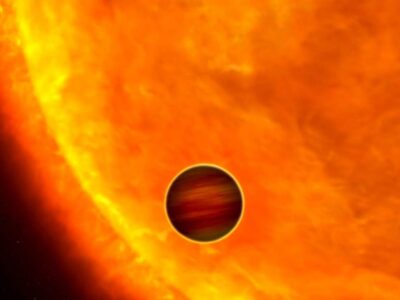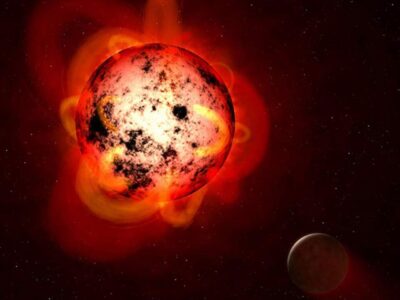One of the critical tasks that NASA handles for the entire world is tracking as numerous near- Earth asteroids (NEAs) as possible. So far, nearly NEAs have been discovered exercising telescopes that overlook the night sky. Those telescopes add about 3000 new near- Earth asteroids each time, but there are still further to discover.
NASA says as it utilizes more advanced face telescopes over the coming many times, it expects rapid-fire growth in the number of discovered NEAs. With a significant increase in the quantum of NEAs anticipated to be discovered in the coming times, astronomers have developed a coming- generation asteroid monitoring algorithm called Sentry-II. It’s designed to ameliorate the vaticination of implicit impacts of the knockouts of thousands of asteroids that pose a implicit threat to the earth.
The image above highlights just how numerous asteroids NASA is tracking. While at first regard, it may look like routeways of the inner solar system globes on a hazy background, each of those blue lines is an asteroid route. The number of asteroids creates a nonfictional spiderweb of ringing patterns NASA is trying to track. NASA wants people to know that asteroids do n’t fly through the solar system aimlessly. Rather, each of them has its own orbital path and are extremely predictable following known paths around the sun.
The Center for Near Earth Object Studies calculates an route for every known NEA with the thing of perfecting impact hazard assessments to support the NASA Planetary Defense Coordination Office. The Sentry-II software is replacing the original software, commonly called Sentry, used by the Center for Near Earth Object Studies to cover impact threat since 2002.
The NASA Jet Propulsion Laboratory (JPL) manages the Center for Near Earth Object Studies. Javier Roa Vicens led the development of Sentry-II when he was working at JPL as a navigation mastermind. Lately, he left JPL and went to work for SpaceX. Vicens says that Sentry was a able system in operation for nearly two decades grounded on “ veritably smart” mathematics. He says in under an hour, dependable impact chances for recently discovered asteroids over the coming 100 times were generated Sentry-II is a tool suitable to fleetly calculate impact chances for all known NEAs, including some special case asteroids that the original Watch software couldn’t handle. Sentry-II can also report the objects posing the most threat in the Center for Near Earth Object Studies Sentry Table. The new software can calculate impact chances exercising a new system making the impact monitoring system more robust. With Sentry-II, NASA can confidently assess implicit impacts of asteroids as low as a many chances in 10 million.
The special case asteroids that the original Watch software couldn’t handle were asteroids that were affected bynon-gravitational forces. The most significant of those forces is thermal caused by the heat from the sun. The original Sentry plodded taking thermal forces into account When asteroids spin, the dayside of the objects are hotted by the sun. That heated face would also rotate to the nightside of the asteroid and cool down, releasing infrared energy. That infrared energy created a small and continual quantum of thrust on the asteroid, commodity known as the Yarkovsky effect. The Yarkovsky effect has veritably little influence on the stir of an asteroid across a short period. Still, over decades and centuries, it can significantly impact the asteroid’s route.
JPL navigation mastermind Davide Farnocchia says that Sentry not taking that effect into account automatically was a limitation of the software. Another limitation was that as scientists came across special case asteroids similar as Apophis, Bennu, and 1950 DA, experimenters had to conduct complex and time- consuming homemade analyses. Thankfully, with Sentry-II now active, it can automatically handle the Yarkovsky effect and special case asteroids, and homemade analysis wo n’t be needed.
Vicens says that while special case asteroids discovered represent a “ veritably bitsy bit” of all near- Earth asteroids impact chances are calculated for, numerous further will be discovered when the NEO Surveyor charge and the VeraC. Rubin Observatory in Chile go online. Sentry-II is helping scientists to be prepared for the new capabilities offered by the systems.
Sentry-II models thousands of arbitrary points that aren’t limited by hypotheticals about how the query region might change. The query region is described as the number of implicit routeways with the factual route lying nearly inside the pall of possible routeways. Sentry-II chooses arbitrary points throughout an asteroid’s entire query region, and also the algorithm determines possible routeways within the entire region of query that could impact the Earth. Sentry-II can zero in on one or further veritably low probability impact scripts the original software could ’ve missed because it does n’t use computations shaped by destined hypotheticals regarding which portion of the query region might lead to impact.
To follow along with the shadowing of these asteroids with NASA, take a peep at the sanctioned@AsteroidWatch Twitter account, as run by NASA’s Joshua Handal at NASA’s Planetary Defense Coordination Office. Once this system is more completely progressed, we ’re crossing our fritters and hoping we ’ll see fresh coffers for on-the- spot shadowing of NEA of all feathers Defending the earth The first step in defending the earth against a potentially dangerous asteroid comes in knowing the dangerous asteroid is out there. Sentry-II is designed to step in formerly a potentially dangerous asteroid is discovered and let us know if there’s a real chance it’ll hit the earth. Should an asteroid be discovered that threatens life on Earth, the coming step would be to help that impact from passing.
This is where the NASA DART charge would come by. Outrage is NASA’s charge to redirect an asteroid using an impactor spacecraft. Basically, NASA wants to know if an asteroid poses a trouble to life on Earth if it’s possible to crash spacecraft into the asteroid, changing its route enough to help the impact. The target for DART is Dimorphos, an asteroid that’s half a afar wide and is part of the Didymos double system.
Outrage is a veritably large spacecraft roughly the size of a small auto. Still, it’ll be traveling at an extreme haste of around mph when it impacts Dimorphos. NASA hopes to shift the asteroid’s route enough to allow telescopes on Earth to observe the change. An Italian Space Agency CubeSat tagging along with DART called LICIACube will be stationed before Outrage impacts the asteroid. It’ll record what happens shortly after the impact from a important near perspective DART launched in late November, and its trip time is about ten months to its target. While its asteroid target is a whopping6.8 million country miles down from Earth, that vast distance is still close enough for DART’s goods to be observable from Earth.















![How to solve [pii_email_af9655d452e4f8805ebf] Error?](https://themediahubs.com/wp-content/uploads/2023/02/U9rr3rhWhUvxCSyrdw3r5MZLGTsfOGbJeliDmntx-1-1-400x225.jpg)



![How to solve [pii_email_af9655d452e4f8805ebf] Error?](https://themediahubs.com/wp-content/uploads/2023/02/U9rr3rhWhUvxCSyrdw3r5MZLGTsfOGbJeliDmntx-1-1-180x180.jpg)
Comments